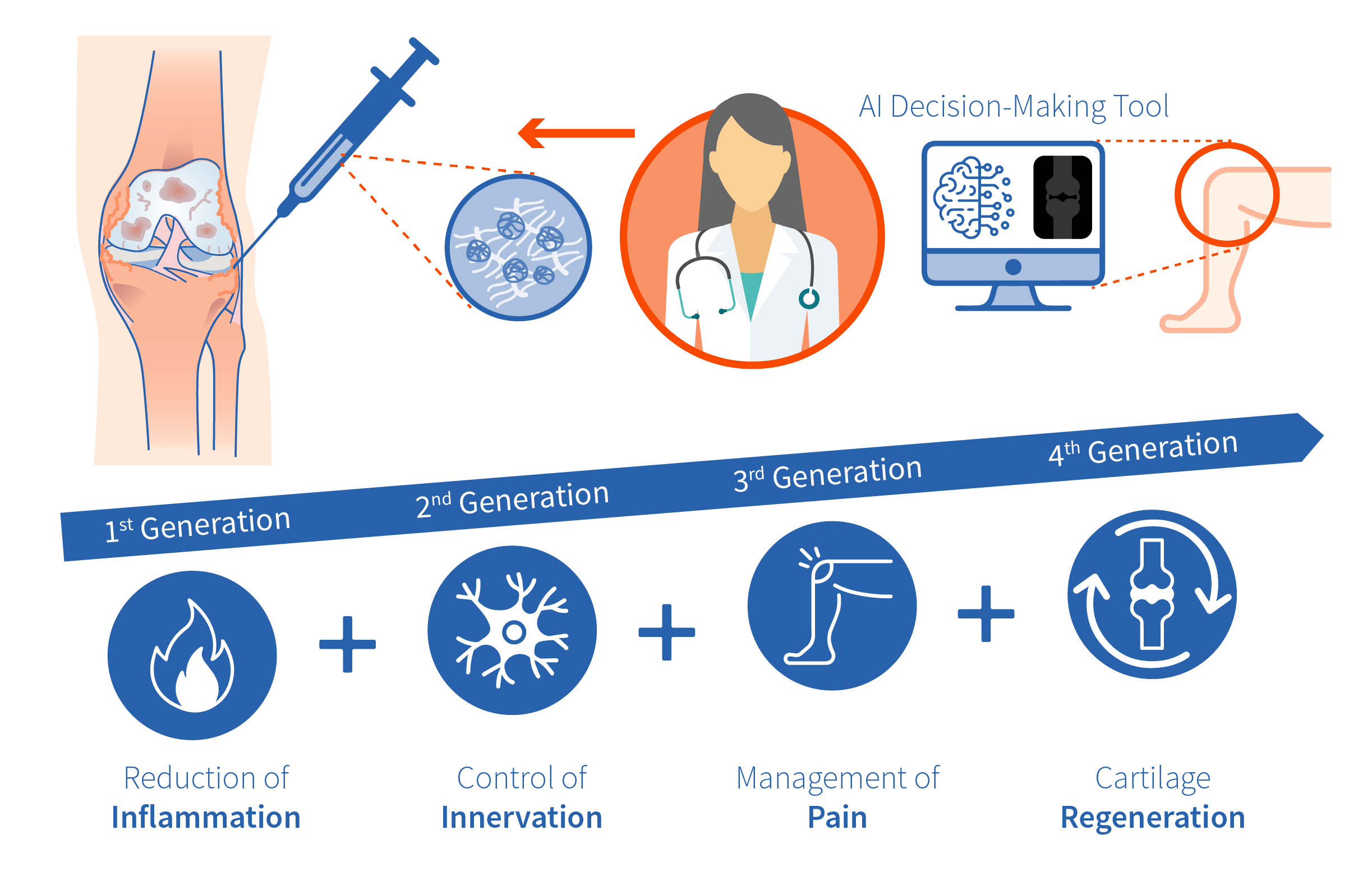Approach
Research currently sees a paradigm shift in the understanding of osteoarthritis (OA) from considering it a purely mechanical disease caused by cartilage wear to a highly complex pathology involving biomechanics, inflammation, and the immune system. Thus, OA is a multifactorial and multi-tissue disease in which risk factors such as age, sex, obesity, and genes play an important part.
Along this line of understanding, SINPAIN seeks to advance RNA-based therapies for the treatment of OA in the knee, focusing on the use of small interference RNA (siRNA). RNA interference (RNAi) is a process that occurs naturally within our cells to block how certain genes are expressed. Thus, safely delivering siRNA to specific tissues and cells holds great promise for developing more targeted and efficient therapies.
SINPAIN’s overall approach thus centers around siRNA-based advanced therapy, integrating current technologies (IA-HA and nanocarriers) together with the combination of therapeutic agents (siRNA, anti-inflammatory) that will be designed step-by-step to successfully manage inflammation and innervation of knee OA at any stage of the disease progress and recover the intact environment of the joint. In the course of the project, four different nanotherapeutic generations will be developed.

Importantly, SINPAIN will study the molecular pathways underpinning OA by state-of-the-art characterisation techniques to discover interplaying mechanisms. Once the microenvironment of healthy joint will be achieved, the immunomodulator peptide, attached to IA-HA, to activate the adaptive immune response will promote cartilage regeneration for grade 3-4 OA and offer an efficient, safe, and cost-effective treatment for the patients. In addition, the data gathered will allow the updating of an established database for OA patients, which will be used, in combination with machine learning, as a decision-making tool to offer the most personalized therapy to patients.